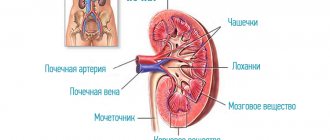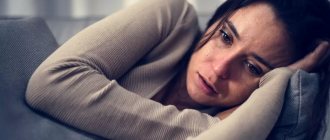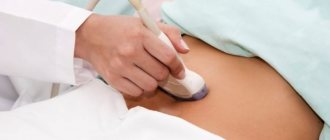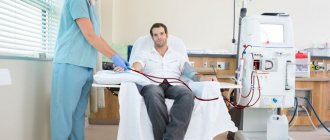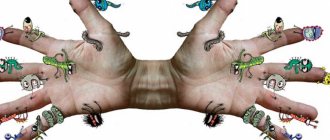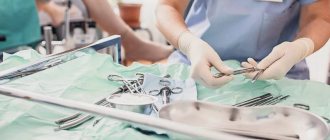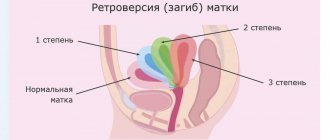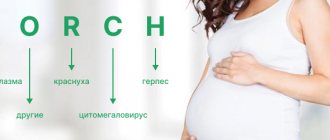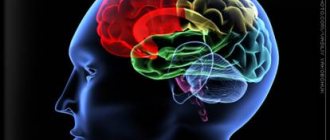To the reference book Diagnosis of vestibular function is carried out through rotational and caloric tests, as well as flank gait, Romberg position and other studies.
Author:
- Sadykhov Rahim Agalarovich
ENT pathology expert
3.00 (Votes: 2)
Diagnosis of vestibular function - identification of spontaneous symptoms of pathologies of the inner ear, the degree of excitability of the vestibular apparatus. Experimental tests are carried out to help determine what causes the symptoms - damage to the labyrinth or parts of the brain.
Why are vestibular tests needed?
Maintaining balance in body and head movements depends on the harmonious interaction of sensory systems and accurate information processing. To keep the body in the right direction and balance, the central nervous system (CNS) constantly needs information from the vestibular, visual and proprioceptive systems about what is happening in the environment. If there is damage in the path of receiving or processing visual images, sounds, etc., then there will be a mismatch of information leading to conflict. This can lead to body imbalance symptoms such as dizziness, which is defined as a false sense of body movement in the environment. There are different types of vertigo, normal (rotational) and non-rotational, characterized by instability, hesitation, a feeling of falling, and deviation of gait.
The central nervous system processes data coming from the periphery, combines them and generates responses with reflexes - they improve postural control and body orientation in relation to space, allowing a person to perform daily actions. The most important reflexes are the vestibulo-ocular and vestibulospinal. Accordingly, the first allows you to stabilize vision during head movement, and the second controls body movements to stabilize the head and body to prevent falls.
Dizziness has a high prevalence among the world's inhabitants. Many authors consider it the main complaint after 65 years, present in approximately 80% of the population. As for the origin, in 85% of cases it is located in the vestibular system, and the remaining 15% originate exclusively from ocular, neurological, psychiatric, metabolic and cardiovascular pathologies.
Indications for vestibulometry
For any suspicion of diseases of the vestibular apparatus, an otorhinolaryngologist prescribes vestibulometry, namely for:
- dizziness;
- nausea, vomiting of central origin;
- impaired coordination of movement and unsteadiness of gait;
- fainting states;
- ear congestion;
- hearing loss;
- instability when moving;
- frequent darkening and flashing of flies before the eyes.
These symptoms can be observed periodically without any particular known reason, or they can be constantly present in the patient’s life. Such symptoms are often caused by another disease, lack of sleep, constant overwork, or travel.
Mandatory indications for the study are:
- vestibular neuronitis;
- brain damage and post-traumatic conditions;
- perilymphatic fistula;
- Meniere's disease;
- bilateral vestibular insufficiency;
- brain tumors;
- multiple sclerosis;
- cerebellar ataxia.
How to treat vestibular vertigo
Dizziness is a common complaint among patients about feeling unwell. Women and the elderly most often suffer from dizziness. Depending on the cause of dizziness, the doctor prescribes treatment. Treating dizziness is a difficult task for a doctor. He refers the patient for examination to determine whether dizziness is caused by diseases. The patient is prescribed symptomatic treatment, which helps to remove symptoms - nausea, vomiting, and stop attacks of dizziness. Vestibular suppressors are used to stop attacks. To prevent attacks from developing, your doctor may prescribe anticholinergic drugs. Such drugs are prescribed with caution to elderly people due to side effects - hallucinations, amnesia, they can cause urinary retention and psychosis in an elderly patient. Some types of antihistamines and benzodiazepines are also prescribed to enhance the inhibitory response of GABA to the patient’s vestibular system.
Diagnosis of spontaneous vestibular reactions
The most common spontaneous vestibular reactions are nystagmus, incoordination of gait and movements, and unsteadiness in the Romberg position. They can develop in any pathological process and have the form of involuntary motor reactions and autonomic disorders.
For example, to identify spontaneous nystagmus, the doctor asks the patient to fix his gaze on any object in the doctor’s hands. Then you need to observe only the movements of the hand with your eyes, without turning your head. In the presence of vestibular nystagmus, the patient will experience two speeds of eyeball movement. In one direction they will move slowly, in the other, on the contrary, very quickly.
There are also different severity and directions of nystagmus.
To study the coordination of movements of the upper limbs, the index and finger-to-nose test is used. The pointing test is carried out as follows: when the patient sits upright, hands are on his knees, the doctor places his index fingers over the patient’s hands so that he can reach them, asks the subject to touch the doctor’s fingers with his index fingers. The test is performed first with eyes open, then with eyes closed.
During the finger-nose test, the patient is asked to spread his arms to the sides, close his eyes, then alternately touch the tip of his nose with his index fingers with his right and left hands. If the left parts of the labyrinth are affected, then the patient misses to the right with one and the other hand, and exactly the opposite.
Stability in the Romberg pose is the study of static balance. The patient needs to stand straight, bring his heels and toes together, put two outstretched arms forward and spread his fingers. They suggest touching the tip of the nose with the right and left hands. Repeat with eyes open and closed.
Also, to examine patients with vestibular pathologies, tests based on walking are used. This is important for assessing dynamic balance, the ability to maintain adequate body position when moving.
Vestibulometry methods
There are several varieties of this procedure, each of which is characterized by certain features. The basis of the techniques is the process of irritation of vestibular receptors. They help the doctor make the correct diagnosis and determine further treatment tactics:
- Caloric test - slow infusion of water with a syringe into Zhanna’s ear canal (water temperature 40 degrees or more often cold - 18 degrees). Accordingly, both thermal and cold calorization can be carried out. To evaluate the sample, it is necessary to determine the time of completion of the procedure before the occurrence of nystagmus. Normally this time is from 25 to 30 seconds. The duration of the nystagmus itself is also determined. Normally for healthy patients this is from 50 to 70 seconds. If the eardrum is perforated, a caloric test is not permitted.
- The purpose of rotary chair testing is to determine if there is any pathology in the inner ear or brain. The test is carried out on a special rotating chair. The patient stands upright, eyes closed, head tilted down, feet on a stand, and hands on the armrests. 10 uniform rotations are performed to the right, then to the left. Rotation speed – 1 revolution for 2 seconds. After the chair stops, the person will try to focus his gaze. We need to start counting down the time. The doctor must determine the duration and severity of nystagmus. Normally, involuntary eye movements last about 30 seconds. An increase in time indicates an increase in the excitability of the labyrinth, a decrease indicates partial or complete suppression.
- The pressor test or pistol symptom condenses (or vacuums) the air in the ear canal using a rubber bulb or a special cylinder. The resulting nystagmus indicates the presence of a fistula in the semilunar canal. As a rule, the test is positive in case of chronic protracted inflammatory processes in the middle ear.
- Wojciech's otolith reaction is performed on a rotating chair. The patient tilts his head 90 degrees and closes his eyes. Then do 5 rotations for 10 seconds. Then there is a 5-second pause and the patient is asked to raise his head and open his eyes. Severe body deviation and autonomic symptoms (nausea, cold sweat, dizziness, and others) indicate an increase in vestibular-vegetative sensitivity. The reaction of the otolithic apparatus is tested when professional selection is needed for work where it is necessary to maintain balance in difficult conditions.
- With stabilometry, static balance is objectively assessed. This highly sensitive method helps to detect vestibular pathologies at the earliest stages, even when the patient has no complaints. The person being studied is placed on a platform, and the computer records every fluctuation in the center of gravity of the body in various planes. Next, the information is processed and the results of the study are processed.
Since there are 5 individual motion sensors in each ear, and most of the tests described above relate to only one of them (the lateral semicircular canal), there is obviously plenty of room for new tests. Theoretically, 4/5 of the inner ear could be destroyed, but traditional vestibular testing may not detect this.
Considering the first trials in the field of vestibulometry, little progress has been made over the past 20 years. Essentially, this is because no one has developed a practical way to stimulate individual vertical semicircular canals (the caloric test does this for the lateral semicircular canal). Rotary chair tests are the closest, but at best they stimulate two vertical channels on opposite sides of the head.
Finally, the entire vestibular nerve can be tested using galvanic stimulation. This is an old technique in which an electrical current is transmitted to the ear and eye movements or postural influences are recorded. This technology is currently not commercial and is quite limited because it is difficult to pass enough current into the ear without causing pain. The test may become popular when a vestibular prosthesis becomes available to replace the balance system in individuals who have had severe bilateral ear pathology.
How is vestibulometry performed?
During vestibulometry, the patient must follow with his eyes a moving target. At the same time, all eye movements are recorded using infrared video cameras, mounted in special large glasses that the person puts on before the procedure. All moments are recorded in detail and read by a computer. This is what helps doctors gain a complete understanding of the structure of the vestibular apparatus and its work. Reaction speed and accuracy of eye movements are assessed. The doctor then performs other vestibular tests.
Preparatory activities before the procedure
Before vestibulometry, special preparation is required. 3 days before the examination you must:
- stop taking any sedatives or psychotropic drugs;
- give up alcohol.
If the patient is forced to take any medications, it is worth informing the doctor in advance.
Women must come for examination without makeup. You cannot use eye shadow or mascara. The use of decorative cosmetics may affect the examination results.
The otolaryngologist will tell you more about the preparatory measures at the initial consultation.
Contraindications for the study
Best materials of the month
- Coronaviruses: SARS-CoV-2 (COVID-19)
- Antibiotics for the prevention and treatment of COVID-19: how effective are they?
- The most common "office" diseases
- Does vodka kill coronavirus?
- How to stay alive on our roads?
It is contraindicated to perform vestibular tests, especially rotational manipulations, with intracranial hypertension, in the acute period with traumatic brain injury and acute cerebrovascular accident, during severe cardiovascular diseases.
Treatment in Moscow
The best treatment for vestibular disorders is considered to be exercises for dizziness or vestibular rehabilitation. Vestibular rehabilitation is carried out in many special centers, including the rehabilitation center of the Yusupov Hospital. Therapeutic gymnastics is carried out by an instructor, classes are developed individually for each patient. A preliminary examination by a neurologist will help determine the cause of dizziness, and the doctor will prescribe effective drug treatment. A neurologist will tell you what examination to undergo and how to cure vestibular vertigo during your consultation.
